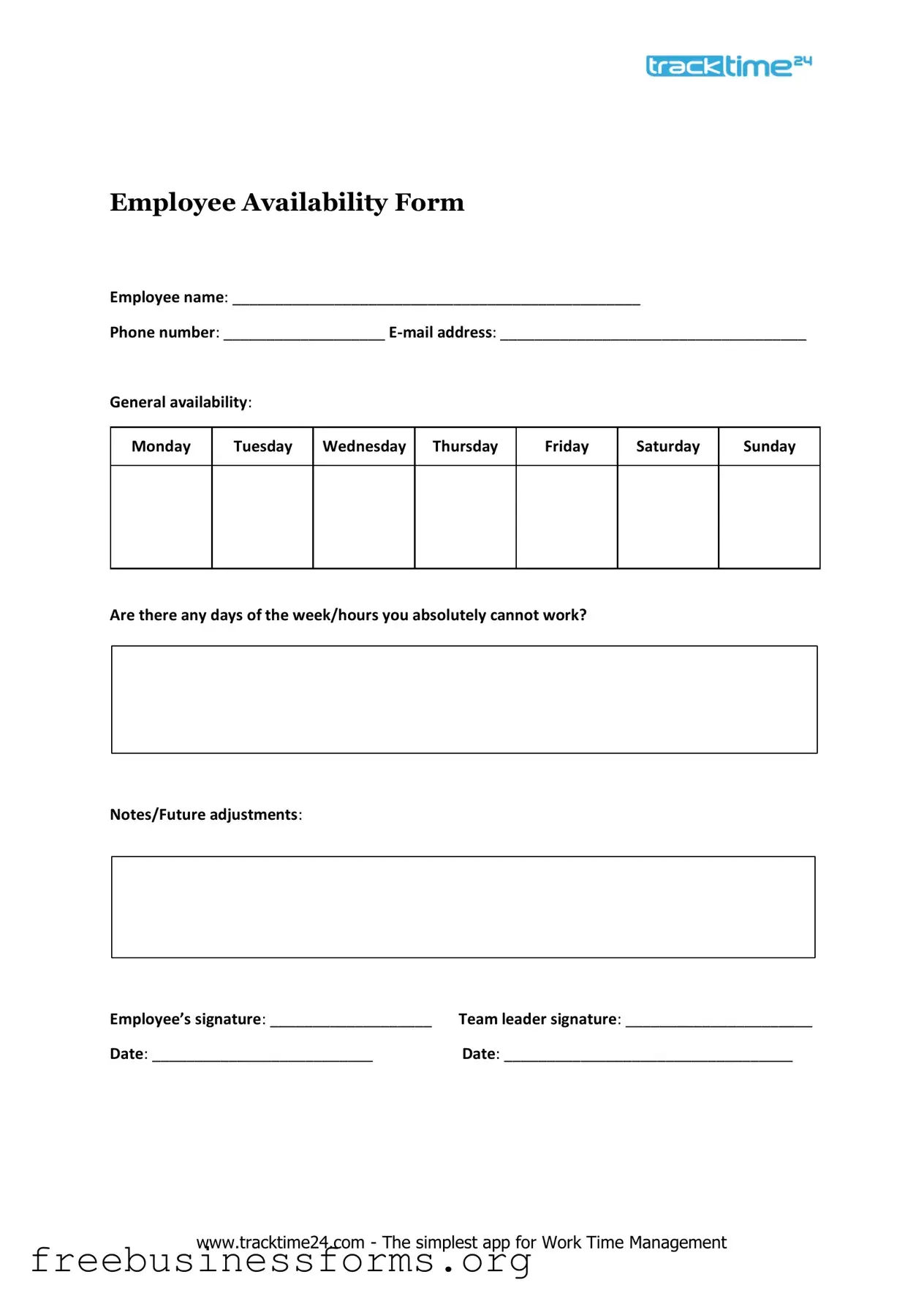The Employee Availability form is a crucial tool for both employers and employees in managing work schedules effectively. This form typically includes sections where employees can indicate their preferred working hours, days of the week they are available, and any specific time constraints they may have due to personal commitments or other obligations. By providing clear and organized information, the form helps employers understand their workforce's availability, facilitating better scheduling decisions that align with both business needs and employee preferences. Additionally, it often allows for the inclusion of notes regarding any desired shifts or roles, ensuring that the employer can consider these requests when creating schedules. Ultimately, the Employee Availability form serves as a bridge for communication, promoting a positive work environment where employees feel heard and valued while helping employers maintain operational efficiency.

